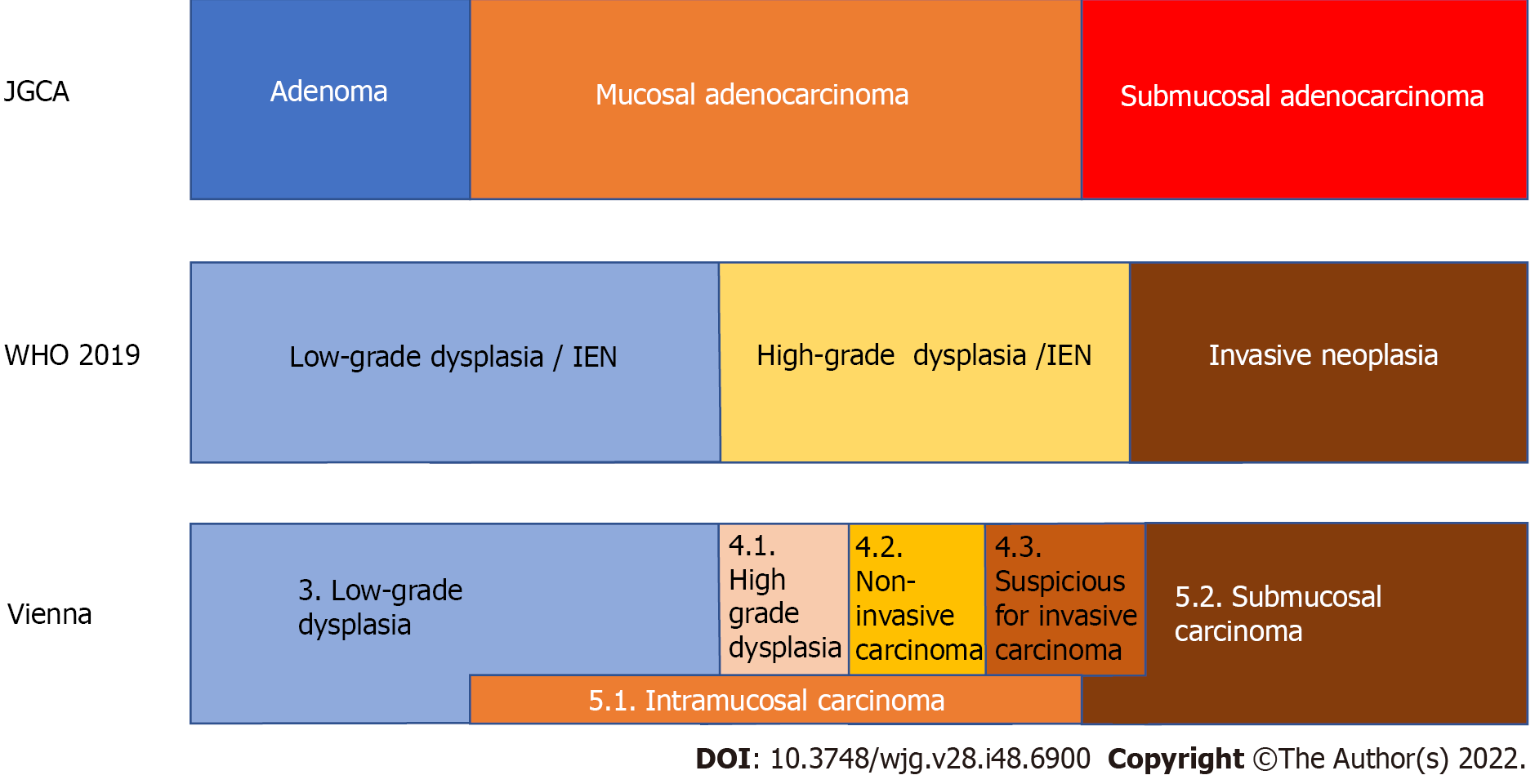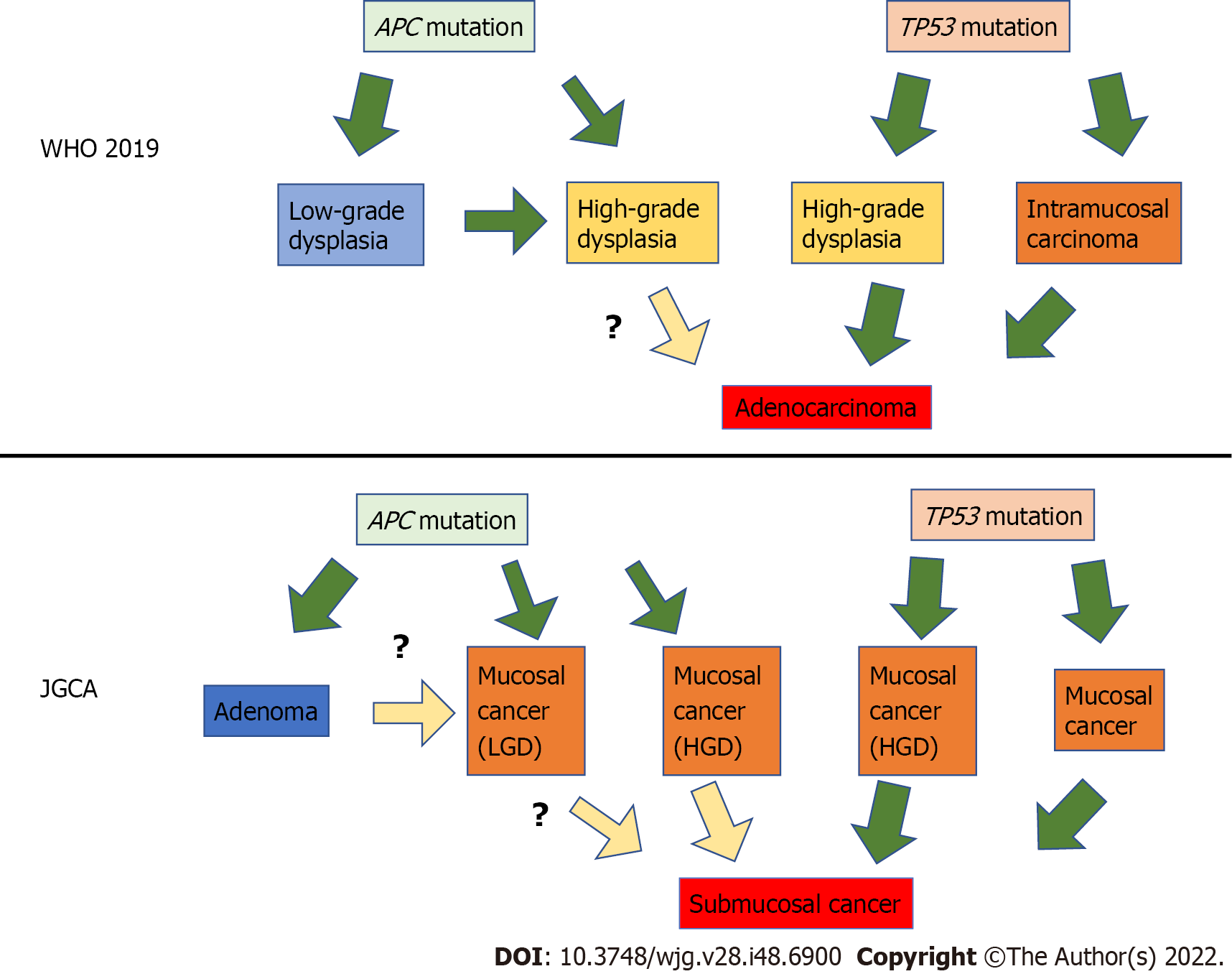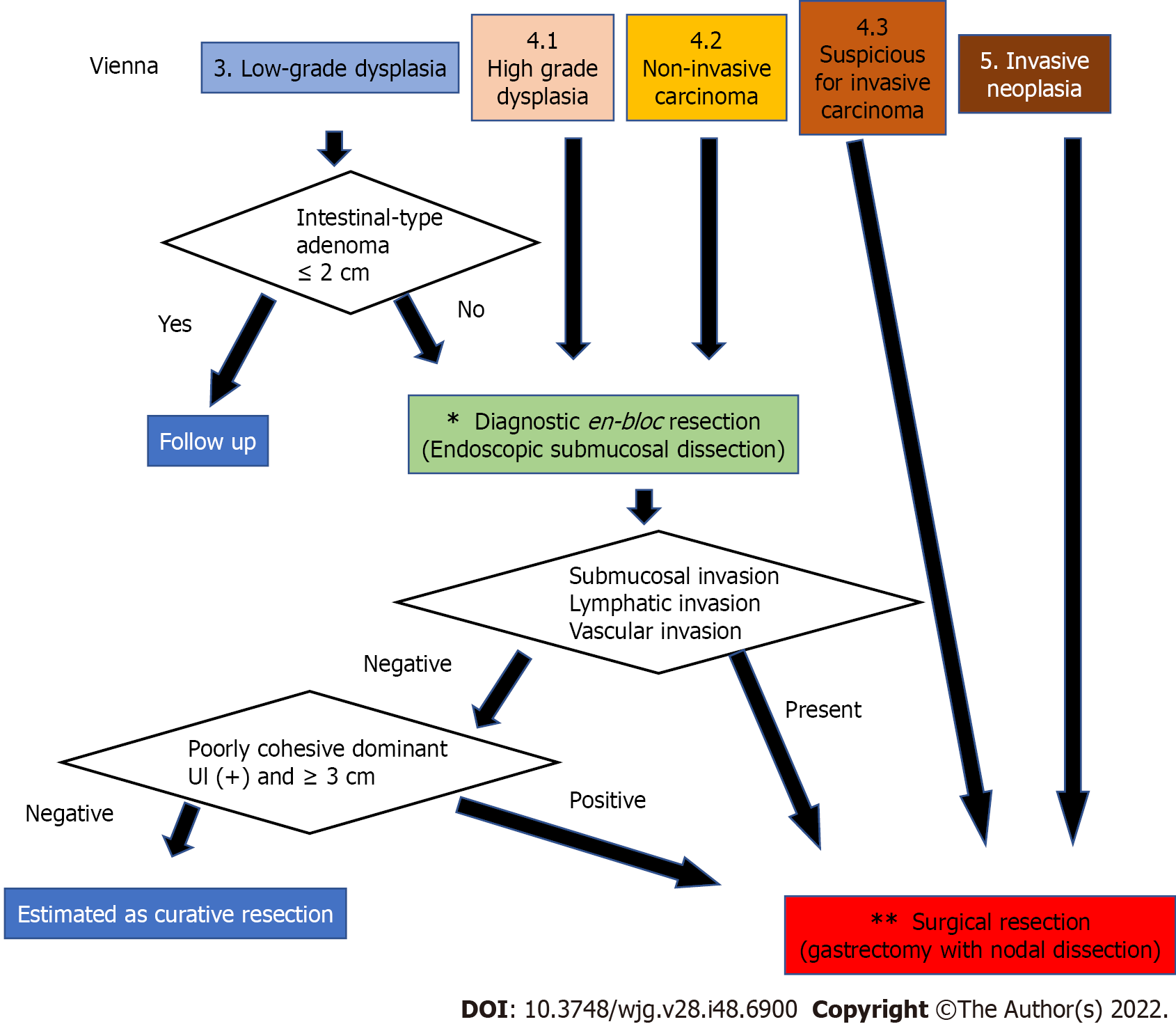Copyright
©The Author(s) 2022.
World J Gastroenterol. Dec 28, 2022; 28(48): 6900-6908
Published online Dec 28, 2022. doi: 10.3748/wjg.v28.i48.6900
Published online Dec 28, 2022. doi: 10.3748/wjg.v28.i48.6900
Figure 1 The relationship of the diagnosis of superficial gastric lesions between the Japanese classification of gastric carcinoma by the Japanese Gastric Cancer Association, the WHO classification, and the Vienna classification.
In Japan, gastric cancer is diagnosed based on cellular and structural atypia. On the other hand, outside Japan, dysplasia is used to describe lesions that are histologically probable neoplastic lesions without evidence of invasive growth. Intraepithelial neoplasia is a synonymous condition. Therefore, all mucosal and some submucosal cancers diagnosed by the Japanese Gastric Cancer Association criteria are diagnosed as dysplasia outside Japan. The original Vienna classification is the answer to this discrepancy by setting non-invasive carcinoma and intramucosal carcinoma. IEN: Intraepithelial neoplasia; JGCA: Japanese Gastric Cancer Association.
Figure 2 The diagram assuming the relationship between gene mutations and gastric carcinogenesis.
Superficial gastric tumors can be roughly divided into two types by specific gene mutations: The APC mutation type and the TP53 mutation type. APC-type tumors have low malignancy and develop into low-grade dysplasia, whereas TP53-type tumors have high malignancy and are considered cancerous even if small. JGCA: Japanese Gastric Cancer Association; HGD: High-grade dysplasia; LGD: Low-grade dysplasia.
Figure 3 The strategy for diagnosis, staging, and treatment of gastric dysplasia and cancer according to the Vienna classification.
Since category 3 and 4 Lesions are highly likely to be mucosal adenocarcinomas according to the Japanese Gastric Cancer Association (JGCA) criteria, complete en bloc resection of the mucosal layer is desirable for diagnosis and initial treatment. However, a small part of category 3, such as a small intestinal-type adenoma judged by the JCGA criteria, can be followed up. In contrast, category 5 corresponds to submucosal adenocarcinoma according to the JGCA criteria; therefore, curative surgery is necessary. Category 4.3 was also treated surgically. The asterisk (*): For en bloc mucosal resection, endoscopic submucosal dissection is appropriate; however, laparoscopic intragastric surgery may also be acceptable in cases where there is no skilled endoscopist. The two asterisks (**): Gastrectomy with lymph node dissection up to D1+ is recommended for surgical treatment. However, since the possibility of lymph node metastasis is only 15%-20% even for such lesions, function-preserving curative gastrectomy guided by sentinel lymph node biopsy can be performed by a specialist.
- Citation: Kinami S, Yamada S, Takamura H. Confusion and prospects for carcinogenesis of gastric adenoma and dysplasia: What is the correct answer currently? World J Gastroenterol 2022; 28(48): 6900-6908
- URL: https://www.wjgnet.com/1007-9327/full/v28/i48/6900.htm
- DOI: https://dx.doi.org/10.3748/wjg.v28.i48.6900











